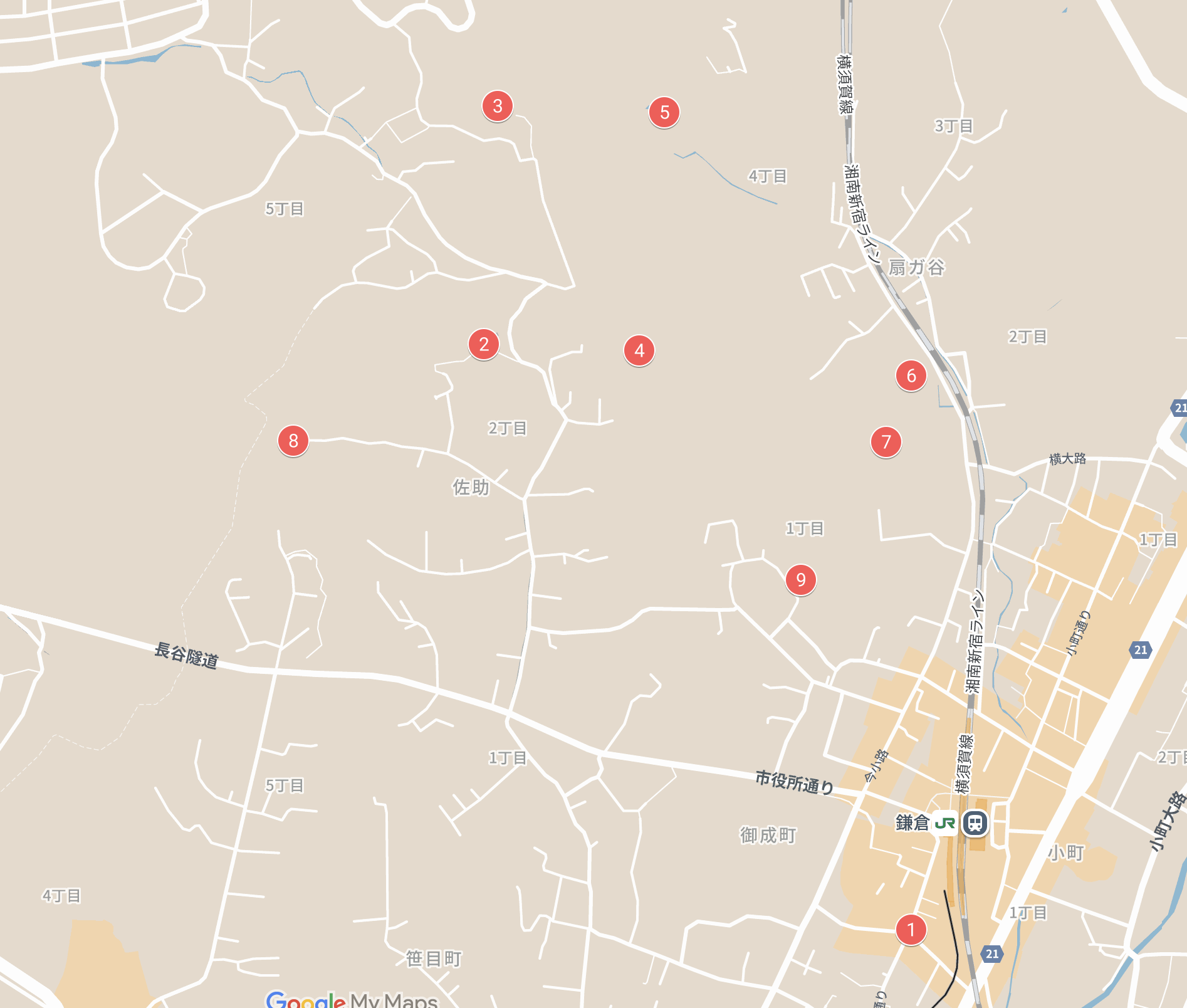AREA
B
AREA
B
鎌倉駅西口エリア
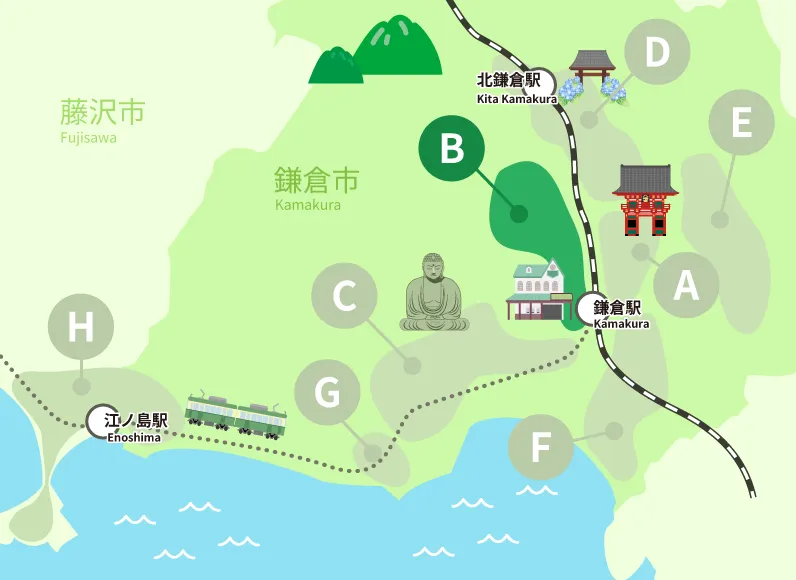
古き良き時代と現代が交差する空間。 歴史ある神社で願いを込め、 地元の暮らしに触れる。
特徴
鎌倉駅西口エリアは、静かな中にも鎌倉の豊かな自然と深い歴史を体感できるスポットが点在する、訪れる人々に新たな発見を提供する魅力的なエリアです。
由比ヶ浜へ続く道には、隠れ家的なカフェやギャラリーが並び、鎌倉の穏やかな日常とアートの両面を楽しむことができます。
中心となる御成通りでは、地元の食材を扱う店や古民家を活用したカフェが軒を連ね、鎌倉の暮らしを間近に感じられます。
鎌倉駅西口から徒歩圏内でアクセスしやすく、地元の人々の生活と触れ合える特別な体験を提供してくれます。
さらに、銭洗弁財天 宇賀福神社や葛原岡神社などのパワースポットでは、財運アップや縁結びといった願いを込めた祈りが行えます。
自然に囲まれたこれらの神社は、鎌倉の精神性と自然美を一度に感じられる、忘れられない場所です。
また、源氏山公園では、平安時代末期の伝説や歴史を背景に、春の桜や秋の紅葉を楽しみながら散策を満喫できます。
静寂の中で自然と歴史を感じるには最適なスポットです。
さらに、海蔵寺、英勝寺、寿福寺といった寺院では、四季折々の花や水にまつわる伝説、歴史上の人物の物語に触れることができます。
特に寿福寺のように国指定史跡となっている寺院は、鎌倉の歴史と文化の奥深さを堪能できる場所です。
鎌倉駅西口エリアは、鎌倉の自然、歴史、そして日常生活が融合するエリア。
訪れるたびに新たな発見があり、散策、休息、祈り、そして学びの場として、訪問者に特別な時間を提供します。
観光スポット
-
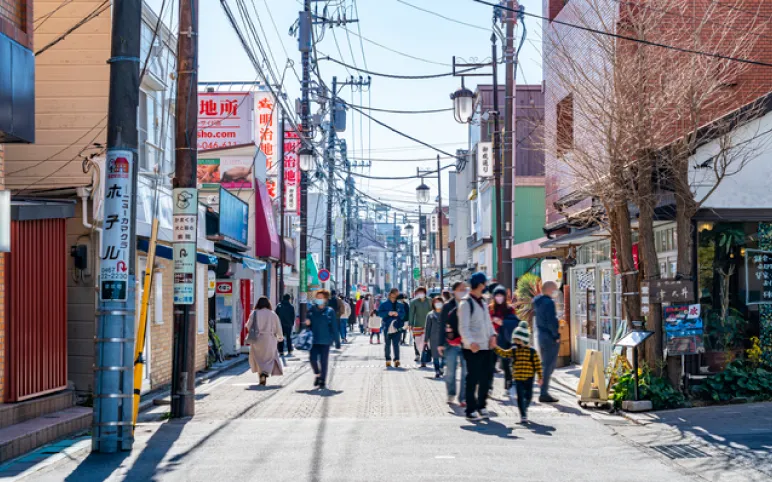
御成通り
鎌倉の隠れた魅力
御成通りの穏やかな散策路鎌倉駅西口から徒歩で行ける商店街。
地元の食材を扱う店や古民家を利用したカフェなどが並び
鎌倉の日常を感じることができます。 -

銭洗弁財天 宇賀福神社
源頼朝の伝説が息づく
銭を洗って繁栄を願う訪れた人々がお金を洗うことで、財運アップを願うことができるユニークな神社。自然豊かな環境の中、神秘的な雰囲気を楽しむことができます。
-
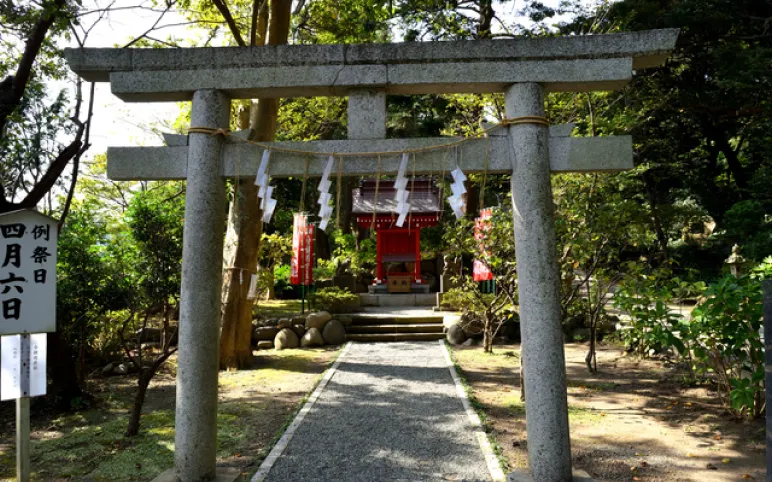
葛原岡神社
恋愛成就の秘密を守る神社
鎌倉の緑豊かな隠れ家恋愛成就や縁結びのパワースポットとして知られ、学問の神様としても信仰されています。願いを込める習わしのある3つの特別な石や、季節の花々が訪れる人々を魅了する、鎌倉で人気のスポットです。
-

源氏山公園
歴史の息吹を感じる
自然の楽園鎌倉の豊かな自然に囲まれ、平安時代末期に源頼朝の先祖が勝利を祈願した伝説の地です。国の史跡・化粧坂(けわいざか)の隣に位置し、自然と歴史が融合する場所として鎌倉の七切通しの一つを形成しています。中央広場には源頼朝の像があり、四季折々の花々、特に桜や紅葉の美しさで知られています。歴史と自然の美を享受できる、鎌倉での散策と休息に最適な場所として親しまれています。
-
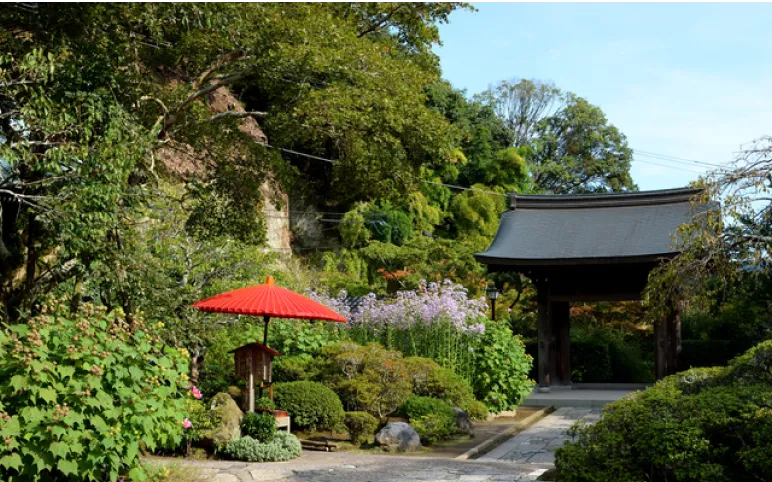
海蔵寺
季節の花と水の伝説が息づく
静寂の楽園静かな禅宗寺院で、「花の寺」や「水の寺」とも称され、四季折々の花々や水にまつわる伝説が特徴です。特に、薬師如来を祀る薬師堂には珍しい薬師如来像があり、美しい自然環境と共に訪れる人々に静寂と癒しを提供します。紅葉の季節には、寺への道が色鮮やかなトンネルを形成し、訪問者に忘れがたい体験を与えます。
-
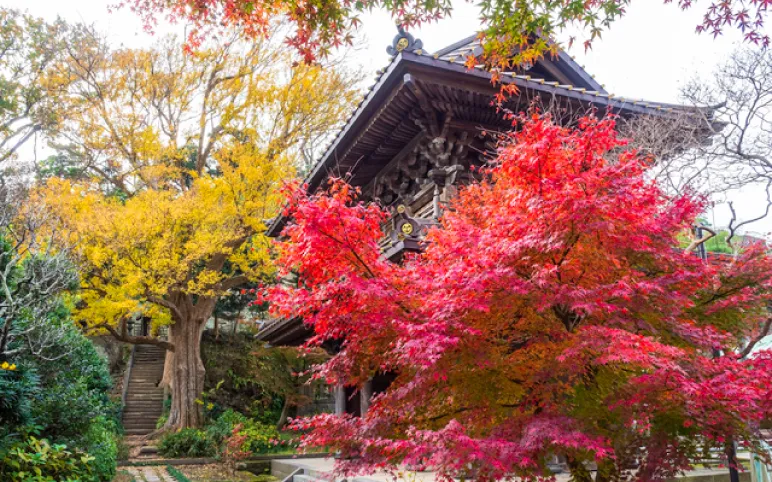
英勝寺
時を超える徳川家の守り
鎌倉に息づく尼寺の遺産鎌倉唯一の尼寺で、徳川家康の側室のお勝の方によって建てられました。水戸徳川家の支援を受け、徳川家の影響を反映した建築美が特徴です。特に、三つ葉葵の紋を施したお堂が象徴的で、「水戸様の尼寺」と呼ばれています。2011年に再建された山門や住職の墓地は、訪れる者に歴史の深さを伝えます。
-
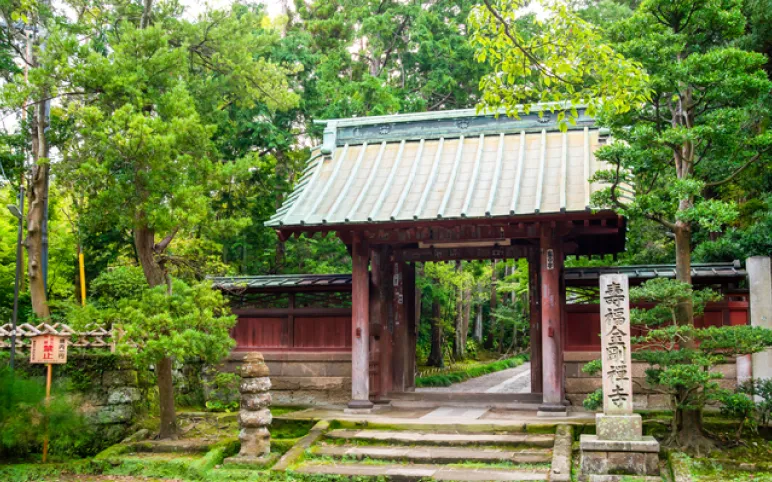
寿福寺
石畳の小径が誘う
鎌倉の歴史散策源頼朝の妻・北条政子によって創建され、源頼朝の菩提を弔うため建てられました。茶の文化を広めた栄西を招き、禅宗の寺院として発展。「鎌倉五山」の一つとして国の指定史跡にも指定されました。美しい石畳の参道や著名人の墓があり、静寂と歴史の美を訪れる人々に伝える貴重な寺院です。
-

佐助稲荷神社
赤い鳥居が導く出世の道
佐助稲荷神社は、鎌倉の隠れた美しい場所で、訪れる人々に開運と出世の祈りを提供します。幻想的な赤い鳥居が続く参道は、まるで別世界への入り口のようです。源頼朝(みなもとのよりとも)が平家に勝利した後、稲荷神の助けを受けたことから「出世の神様」として信仰を集めました。深い緑に囲まれた境内では、仕事運や商売繁盛、病気平癒、縁結びなど多くの願いが叶うとされ、多くの参拝者が訪れます。は、鎌倉の隠れた美しい場所で、訪れる人々に開運と出世の祈りを提供します。幻想的な赤い鳥居が続く参道は、まるで別世界への入り口のようです。源頼朝(みなもとのよりとも)が平家に勝利した後、稲荷神の助けを受けたことから「出世の神様」として信仰を集めました。深い緑に囲まれた境内では、仕事運や商売繁盛、病気平癒、縁結びなど多くの願いが叶うとされ、多くの参拝者が訪れます。
-
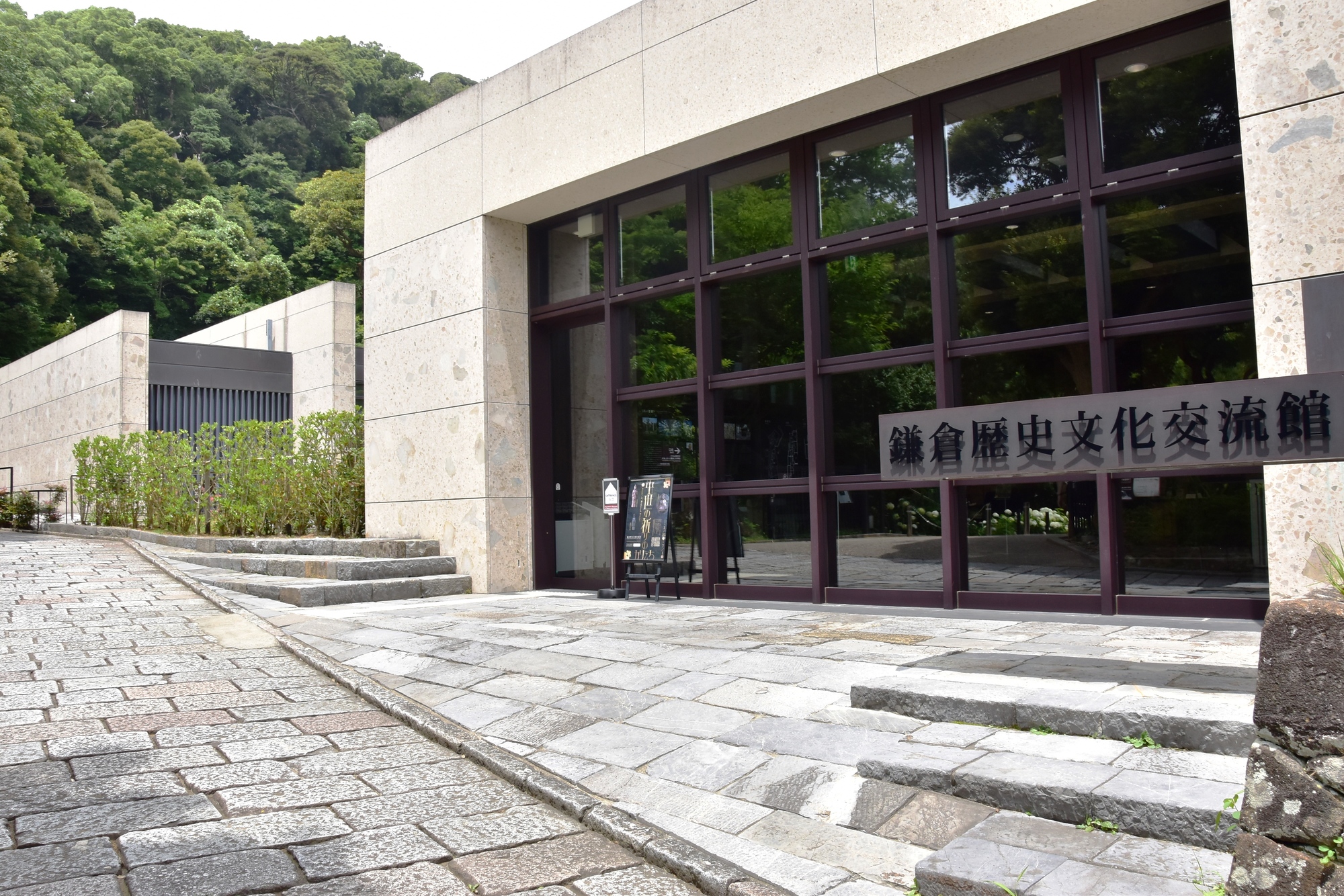
鎌倉歴史文化交流館
歴史と未来が出会う、光と知のミュージアム
鎌倉歴史文化交流館(かまくられきしぶんかこうりゅうかん)は、最先端のデジタル技術と世界的建築家ノーマン・フォスター卿設計の洗練された建築空間を融合させ、鎌倉の歴史を体感的に学べる文化施設です。中世都市・鎌倉の成り立ちや名所をVRやプロジェクションマッピングで再現し、初心者から歴史愛好家まで楽しめる構成が魅力。高台から望む相模湾の景色や四季折々に彩られる中庭も、訪れる人々に静かな感動を与えます。
-
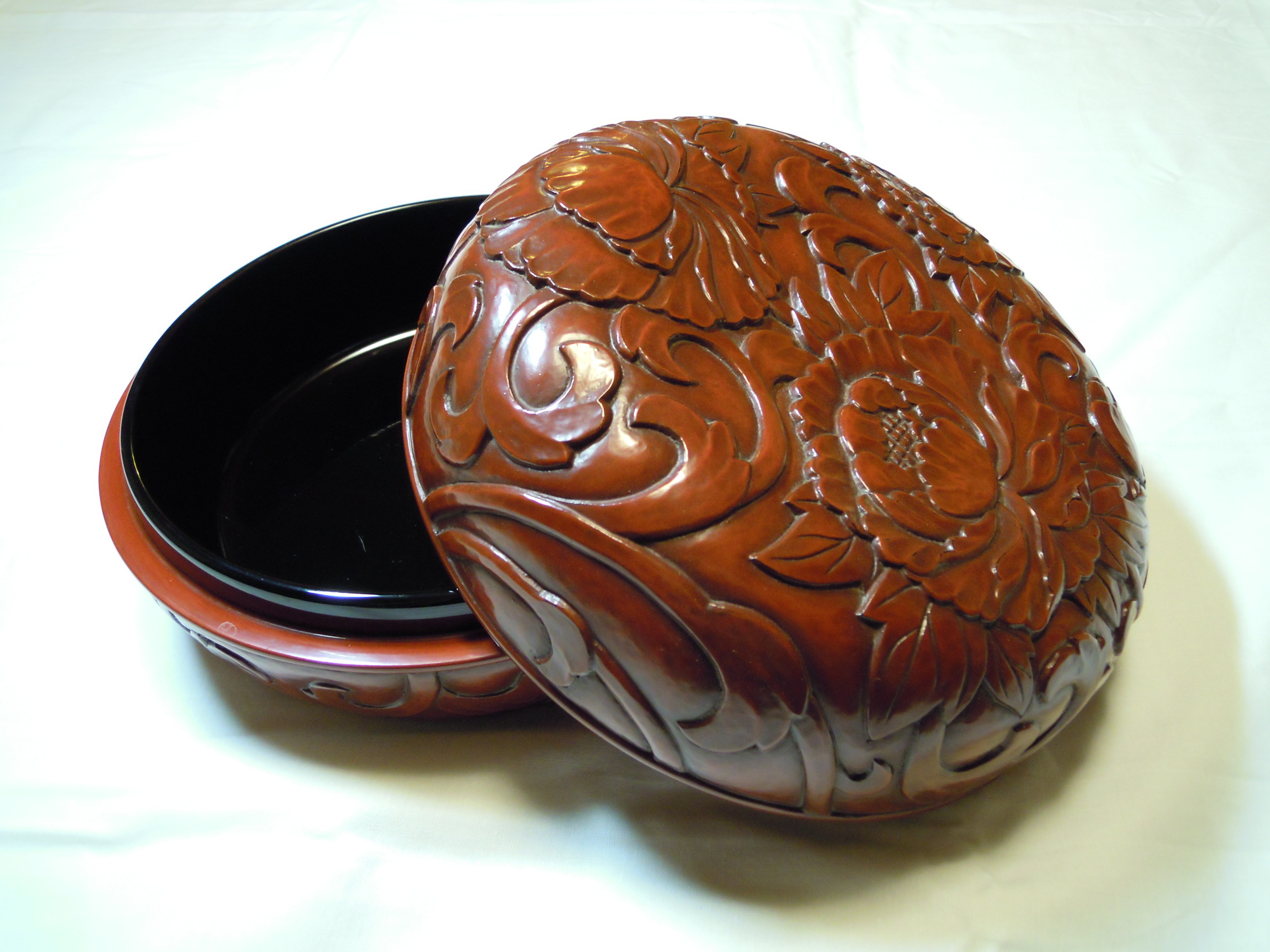
鎌倉彫工芸館
伝統工芸の技と美、鎌倉彫の世界に触れる特別な体験
鎌倉彫工芸館は、鎌倉彫の販売や体験教室を通じて、日本の伝統工芸の魅力を身近に感じられる場所です。経済産業大臣指定の伝統的工芸品として、鎌倉彫の歴史や職人技に触れながら、展示や漆塗り体験を楽しめます。工芸の美しさを体感する特別なひとときを提供しています。

